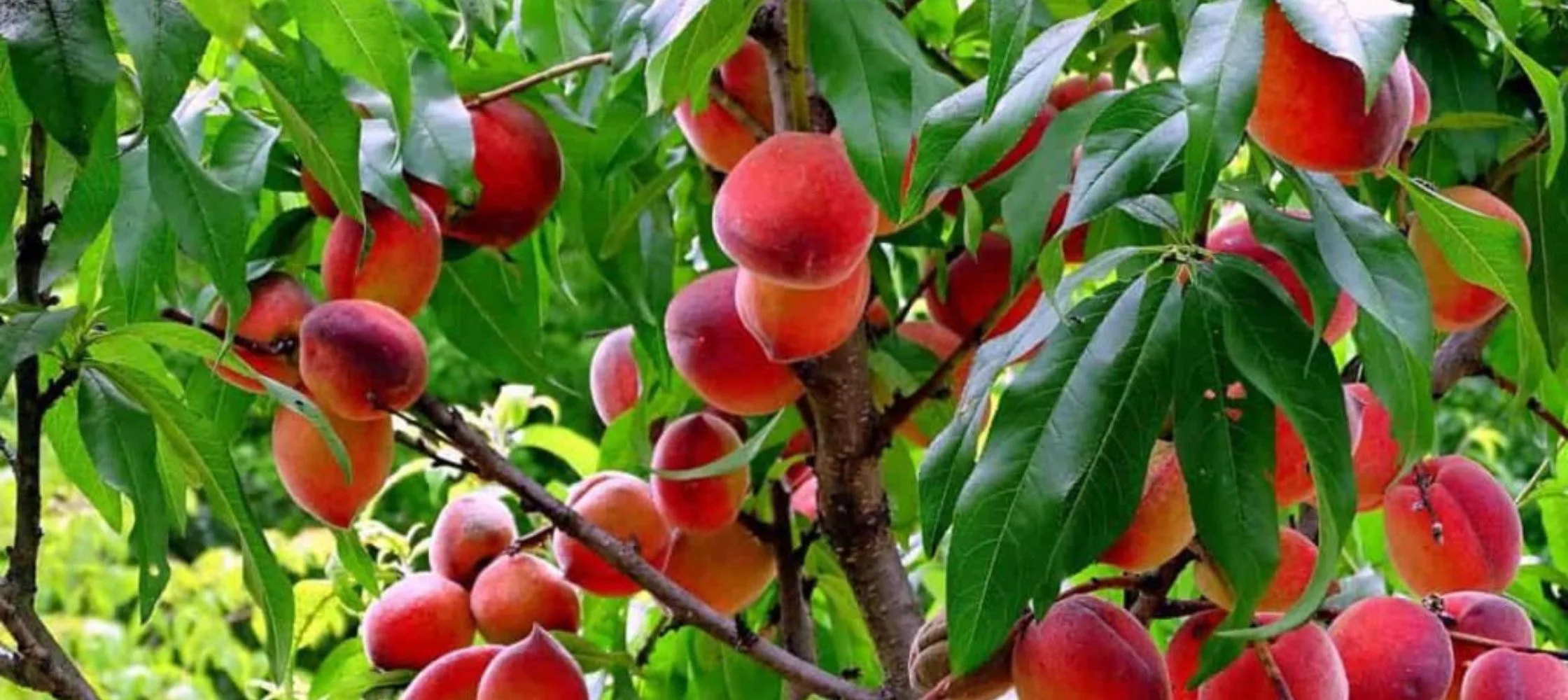
By Chetak Bishnoi, Sukhwinder Singh and Amardeep Kaur
Fruit cultivation is a prerequisite not only to diversify farming but for the human health and economic stability of the farming community as well. Punjab is gifted with a variety of Agro-climatic conditions, which enable the state to grow region-specific horticultural crops. Peaches are highly valued as table fruit for their attractive color and palatability. They can be also processed as canned and dried products, frozen preserves, jam, nectar, juice, beverage, and marmalade. Peaches are also a good source of a low calorific diet. Peach is a temperate fruit tree but it is possible to grow in the sub-tropical climate of Punjab due to the availability of suitable low-chilling cultivars and their production technology. For successful cultivation of peach, the following practices should be followed:
Select a well-drained, fertile land. Soil having EC below 0.5 m mhos/cm, calcium carbonate less than 5%, lime less than 10%, pH between 6-8, and hard pan free up to a depth of 120 cm, is good for peach. Better to have a soil test report to avoid later on the failure of the crop.
Select a good cultivar developed and released for particular climatic conditions. The cultivars recommended for cultivation in the southwest region of Punjab are enlisted below:
|
|
|
|
|
|
||
|
|
|
|
|
|
|
|
|
|
|
|
|
|
|
|
|
|
||
|
|
|
|
|
|
|
|
|
|
||
|
|
|
|
|
|
||
Before planting, dug a pit of 1x1x1 m size at 6.5 X 6.5 m interval accommodating 94 plants per acre. Fill the pits with Soil, FYM, and coarse sand in equal proportion and irrigate to settle. The last week of Dec to Jan is the ideal time for planting the peach orchard. Select the plant with graft union at 10-15 cm above the ground. After planting, irrigate the field immediately. Cover the young plants with to protect them from hot and dry waves during summer with sarkanda. Always procure 1.0- 1.2 m tall plants for planting an orchard. In high-density planting peach trees should be planted at a spacing of 6 m×1.5 m with a ‘Y’ system of training. This practice ensures higher yield and better fruit quality than the traditional planting system.
Peach plants are mostly trained on a modified leader system so one-year-old plants should be headed back up to 90 cm during January to ensure develop the proper framework of the tree. In peach, fruit is borne on one-year-old shoots. About 40 percent of one-year-old shoots should be thinned out to ensure proper growth of trees and improve fruit size and quality. Pruning should be done by thinning out some one-year-old shoots expected to bear fruit. Apply Bordeaux paste followed by Bordeaux paint after 1 or 2 weeks
FYM and other Inorganic fertilizers like Urea, SSP and MOP should be applied according to the age of plants. Apply annually 30 kg FYM, 1 kg urea, 760 g SSP, and 830 g MOP for the age of 5 years and above in the peach plant. The plants need irrigation at the time of flower initiation, fruit set, and fruit development stage. The drip irrigation method is a very viable option for the irrigation of peach orchards. Paddy straw mulching can also be used to conserve soil moisture. Peach trees planted on light-textured and high-pH soils often exhibit iron deficiency symptoms during summer and rainy seasons. Interveinal chlorosis (yellowing in between veins) of developing new leaves on the terminal part of shoots is a clear symptom of deficiency. Iron deficiency can be corrected by spraying peach trees with 0.3 percent ferrous sulfate solution (3g ferrous sulfate in one liter of water) on spring flush in April, summer flush in June, and late summer flush in August-September.
Weeds are common in peach orchards during spring and the rainy season. Weeds should be checked by manual plowing. Application of paddy straw mulch (10 cm layer) @ 4.5 ton per acre during the first week of March effectively suppress the weeds. Mulching should be done after the application of second split doses of inorganic fertilizers.
Peach fruits should be harvested at the right stage of maturity depending upon their market destination. For distant markets, the fruit should be picked at a firm mature stage. For the local market, the fruit may be picked when nearly ripe. In white-fleshed varieties color of the fruit changes from green to straw (dry grass) with pink blush on the sides. Fruits harvested at this stage take 3-4 days to ripen. All the fruits do not ripen at the same time on the tree. Earlier set fruits mature first and later set fruits mature later. Generally, 3-4 pickings are done to complete the harvesting. During picking collect the fruits in baskets/plastic cartons after putting some dry grass or paper strips in them as a cushion to prevent injury or bruises to the fruits. Drop-bottom picking bags are now available or can be made to order for picking peaches.
Southwest region of Punjab is mostly prone to attacks by termites on new and old plants. Remove plant residues and other debris from the orchards especially moist and decaying woods after pruning. Monitor the orchard regularly. To check the infestation, use eco-friendly PAU earthen pot technology during the first week of April and September. Harvest the ripening fruits and do not allow the ripe fruits on the tree. To manage fruit fly infestation, plant early maturing varieties and fix PAU fruit fly trap @16 traps/acre in May.
Termite- A Serious threat of peach in the Southwest region of Punjab
Fe deficiency in the peach plant
Your email address will not be published. Required fields are marked *
29 Jan, 2024
29 Jan, 2024
29 Jan, 2024
25 Jan, 2024
Peggy Carmichael
26 May, 2022
Hi therisingpanjab.com webmaster, You always provide helpful information.